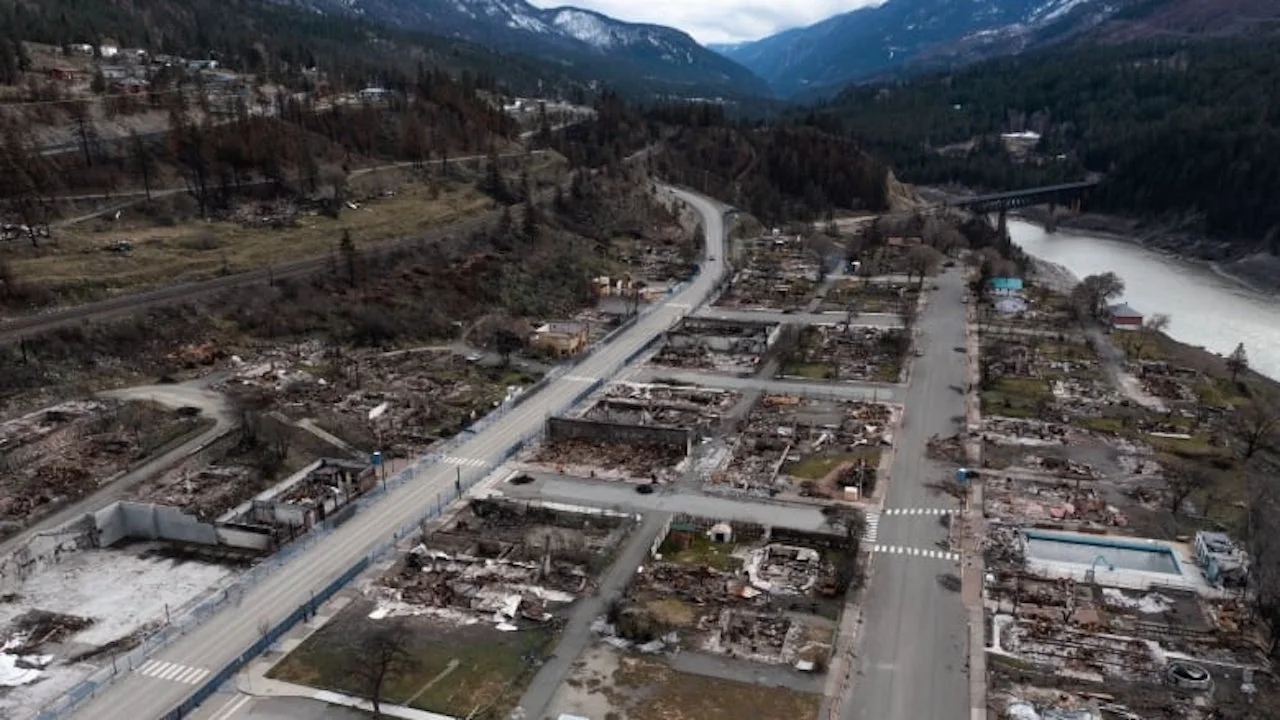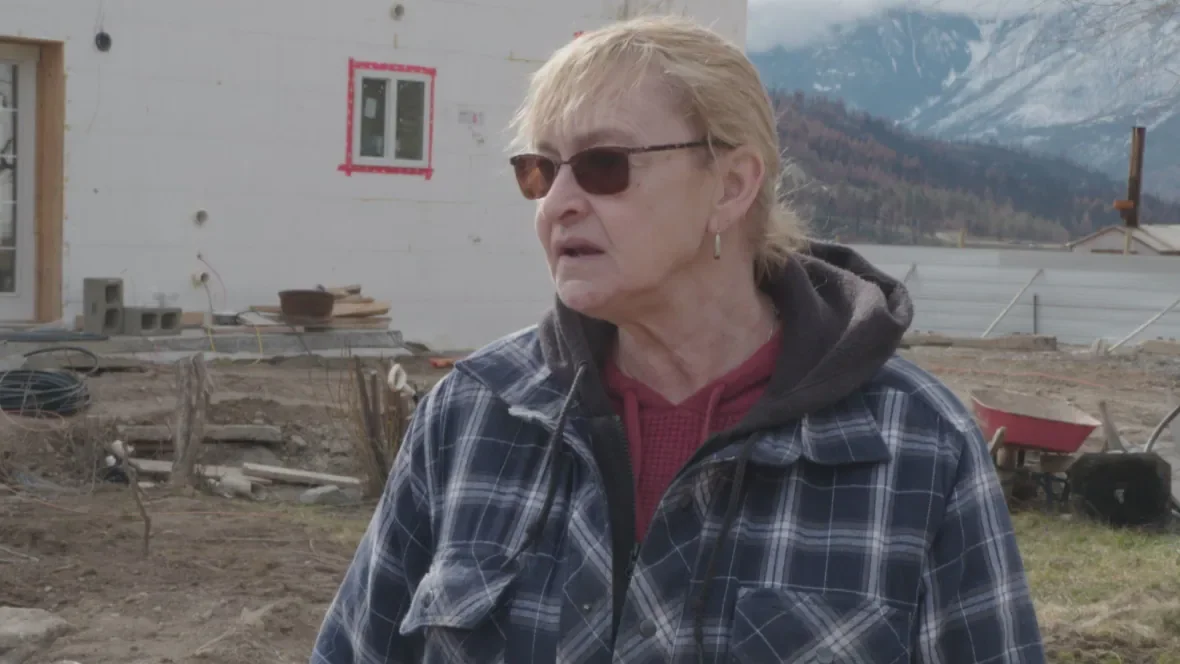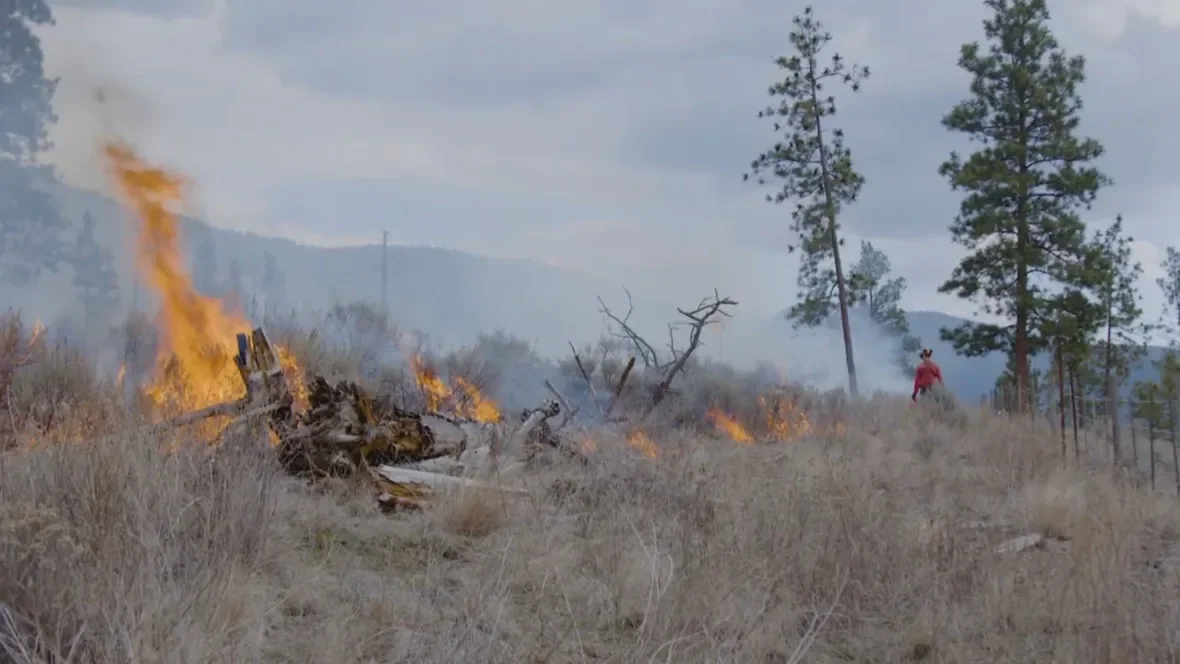
How some Lytton, B.C., residents fireproof homes as they rebuild village
Tricia Thorpe remembers the day her hometown of Lytton, B.C., went up in flames "like a blow torch."
After days of record-breaking heat in late June 2021, she says she could see the whole town on fire from her house.
SEE ALSO: Company donating enough lumber to rebuild 50 buildings in Lytton, B.C.
Before she knew it, the fire was coming over the ridge toward her property. Thorpe and her husband jumped in their car to try to get help, not thinking it would be the last time they'd see their home, she says.
"That part was the tough part," Thorpe said, while recounting how some of her animals didn't survive the fire near the junction of the Thompson and Fraser rivers in southwestern B.C.

Burnt homes and vehicles in Lytton nearly eight months after a wildfire swept through the village located on the Fraser River in B.C.'s Southern Interior. (Gian Paolo Mendoza/CBC)
Nearly nine months after the devastating fire, Thorpe and her husband are rebuilding their house and other structures on their property — but this time she says they're taking steps to fireproof the buildings to avoid the complete loss of all of their belongings should another fire occur.
HOW TO FIREPROOF A HOME
Fireproofing involves taking steps to make your home as fire-resistant as possible, according to Fire Smart B.C. — a group of organizations that work together to support wildfire preparedness, prevention and mitigation in the province.
Some recommendations outlined in their 19-page manual include: removing low-hanging branches and other debris that are easily ignited by sparks or embers and using non-combustible materials like clay, metal, concrete and asphalt to construct homes.
Thorpe says they've been following the manual to help rebuild their home. So far, she says they've buried electrical cables below the ground to protect them from future fires.

Lytton resident Tricia Thorpe says she and her husband considered moving away permanently after losing their home and some of their animals in the June 2021 wildfire that destroyed the town. (Gian Paolo Mendoza/CBC News)
She also says they're using fire-resistant materials such as concrete foam, a metal roof, and concrete floors to construct the home.
"We don't want it to come in the same direction and take us out again," Thorpe said. "We're going to do everything we can to stop that from happening."
But fireproofing isn't just needed in Lytton. Bruce Blackwell, senior associate with B.A. Blackwell & Associates Ltd. — a forestry consultant company that works with government, the private sector, and First Nations — says people living in Metro Vancouver should make sure their homes are safe from potential wildfires.
Blackwell says events like last summer's heat dome show just how parched vegetation can become, making it a ready fuel for fires.
He says he has been working on fire resiliency plans for governments for over two decades, but says most of them have sat on shelves. He adds that there have been plenty of warning signs in the past.
"Fort McMurray was a wake up call. Slave Lake was a wake up call. Kelowna was a wake up call," Blackwell said. "You've got numerous fires in California.... I'm not entirely confident we got it."
CONTROLLED BURNS -- ANOTHER SOLUTION?
There are other steps that can be taken to make sure wildfires aren't as destructive.
Brendan Mercer, the information and technology manager with the First Nations' Emergency Services Society of B.C., says Indigenous people used to use cultural burning regularly in the spring and late fall — the practice of setting low-intensity fires in small, controllable areas to get rid of any flammable materials — but colonial laws put a halt to the practice.
Mercer says the practice is effective because when a fire hits an area that has already been burned and doesn't have any fuel sources, it stops. He says burning strategic areas might help prevent future wildfires from devastating huge swaths of landscapes.

First Nations' Emergency Services Society of B.C.'s Brendan Mercer says cultural burning, pictured here, is the practice of setting low-intensity fires in small, controllable areas to get rid of excess flammable materials. (First Nations' Emergency Services Society of B.C./YouTube)
He says First Nations are working with the province to bring cultural burning back.
"It does take a concerted effort, a big effort to reduce the risk on a big scale," Mercer said. "And I think that our cultural burning can be super effective going forward."
Thorpe says she and her husband considered leaving Lytton for good after the fire, but says they came back because of the community support.
"They've been there all the way along and without all the help we've had from the community, we'd be nowhere."
The story was written by Ashley Moliere, originally published for CBC News on April 3, 2022. It contains files from Michelle Ghoussoub and Gian Paolo Mendoza.










